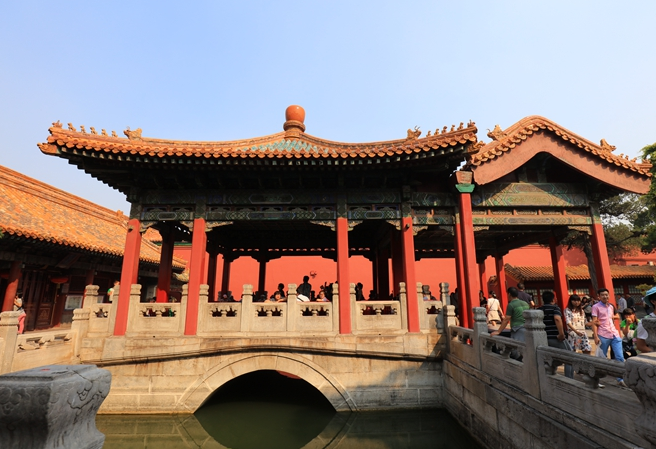
A Tale of Two Pavilions: The Enchanting Beauty of Fubi Pavilion and Chengrui Pavilion
A Glimpse into Tranquility: Fubi Pavilion
Nestled amidst a sea of vibrant lotus blossoms, Fubi Pavilion emerges as a beacon of serene beauty. The pavilion itself is a masterpiece of traditional Chinese architecture, with its gracefully curved eaves, intricately carved wooden pillars, and vibrant red and gold accents.
- A Lotus Paradise: During summer, the air buzzes with the gentle hum of dragonflies as they flit between the pink and white lotus flowers that blanket the pond's surface. Their delicate fragrance mingles with the fresh scent of water, creating an intoxicating aroma that soothes the soul.
- Reflections of Beauty: The pavilion's name, "Fubi," translates to "floating jade," a fitting description for its ethereal presence reflected on the water's surface. The shimmering image, constantly shifting with the ripples of the pond, seems to exist in a realm between reality and dreams.
- A Place for Contemplation: As the sun dips below the horizon, casting long shadows across the water, Fubi Pavilion transforms into a haven for quiet contemplation. The gentle lapping of water against the pavilion's base and the soft rustling of leaves in the breeze create a symphony of tranquility, inviting visitors to lose themselves in the moment.
Serenity on a Grander Scale: Chengrui Pavilion
Perched atop a gentle slope, Chengrui Pavilion commands breathtaking panoramic views of the surrounding landscape. Unlike Fubi Pavilion's intimate charm, Chengrui embodies a sense of expansive grandeur.
- A Feast for the Eyes: From its elevated position, visitors are treated to a visual feast. Rolling hills, blanketed in lush greenery, stretch out towards the horizon, their contours softened by a gentle haze. Winding rivers glimmer like silver ribbons, reflecting the azure sky above.
- Architectural Splendor: The pavilion itself is a testament to the ingenuity of ancient Chinese architects. Its massive pillars, meticulously carved with intricate designs, support a sprawling roof adorned with colorful glazed tiles. The interplay of light and shadow across the pavilion's intricate details creates a sense of depth and artistry.
- Nature's Symphony: A gentle breeze carries with it the sweet scent of wildflowers that dot the surrounding hillsides. The rustling of leaves in the nearby bamboo grove provides a soothing soundtrack, while the occasional chirping of birds adds a touch of playful melody to the air.
A Contrast in Harmony: Two Pavilions, One Unforgettable Experience
Though different in their character and setting, Fubi Pavilion and Chengrui Pavilion complement each other perfectly, offering visitors a holistic experience of beauty and tranquility. While Fubi invites introspection and quiet communion with nature, Chengrui provides a sense of awe-inspiring grandeur and a panoramic perspective of the world. Together, they represent the harmonious coexistence of contrasting elements, a testament to the captivating beauty found in the balance of nature and human artistry.
Questions and Answers
Q: What is the best time of year to visit the pavilions?
A: Both pavilions offer unique beauty throughout the year. However, Fubi Pavilion is especially stunning in summer when the lotus flowers are in full bloom. Chengrui Pavilion, on the other hand, is breathtaking in autumn when the surrounding hills are ablaze with vibrant hues of red, orange, and yellow.
Q: Are there any legends or stories associated with the pavilions?
A: While the specific origins of these fictional pavilions are unknown, many pavilions in China are steeped in folklore and legend. Some are said to have been visited by emperors and inspired famous poets, adding a layer of historical intrigue to their beauty.
Q: What activities can visitors enjoy at the pavilions?
A: Visitors can enjoy leisurely walks around the pavilions, taking in the serene surroundings. Photography enthusiasts will find ample opportunities to capture the beauty of the architecture and nature. The pavilions are also ideal spots for quiet reflection, meditation, or simply enjoying a peaceful moment amidst the beauty of nature.